Intro to Palm Reading

April 20, 2022
Estimated Read Time: 9 Minutes
Palm reading is a spiritual practice that tends to get a bad rap. Most media representations of the art make it out to be complete quackery. But if we adjust our expectations, we can break through the stereotypes and appreciate palmistry for what it is — yet another tool in a witch’s arsenal.
Ultimately, palm reading can still tell us a lot about ourselves and the people around us. The shape of the hand, as well as different mounts and creases that make up the surface, can reveal a person’s life path and personality — among other things. In a single session, a skilled practitioner could even catch glimpses of huge life events a person has or will live through.
Of course, beginners shouldn’t expect to be quite so successful on the first try. Still, everyone has to start somewhere. In this case, as with many other Wiccan lessons, it helps to start with some history.
A Brief History of Palmistry

Even though it’s clear that humans have been obsessed with hands and palm prints for tens of thousands of years, we can’t credit Neanderthals with the creation of palmistry. Ancient humans probably didn’t fully understand how unique each hand really was. Still, the practice of palm reading is as old as they come.
After all, it started taking shape several thousand years before Christ. According to most sources, palmistry seems to have originated in India. However, traditional Chinese medicine also sectioned the hand in similar ways — albeit for different reasons.
Namely, they found that different parts of the hand were connected to different organs. As such, they used the hand to diagnose different illnesses. Since palmistry can be used to diagnose certain disorders in the subject’s life, you can see how the two might coincide. But how did this practice come to Europe, anyway?

Well, it all has to do with the Roma people, who brought the tradition over from India in the 8th century. From that point, various ethnic groups picked up and adapted the practice. That’s why we now have multiple interpretations for some of the features we’ll discuss.
In the 16th and 17th centuries, palm reading could land someone on trial for being a witch. And as we all know, it didn’t take much to convict and sentence witches to death. Fortunately, the stigma we deal with today is nowhere near that serious. At most, someone might call us charlatans — but that just means that they’ll miss out on a palm reading session!
Our free Wicca 101 course provides the essential knowledge and skills
you need to start confidently practicing Wicca.
Join the Wicca Academy community today!
Palm Reading Lines and Other Features to Look Out for

Contrary to popular belief, palmistry isn’t just about measuring the length of the lines that run across our palms. Rather, it’s a visual practice that takes into account many different features, from the shape of the palm and length of the fingers to the mounds and plains that make up the palm. Having said that, we can start with the palm reading basics.
Traditional Palmistry Lines
Before we talk about palmistry hand symbols, you might want to break out a palm reading chart. In the absence of one, your own hand will do. Either way, looking at a reference will help you learn the topography of the hand. With that in mind, let’s talk about the basic palm reading lines we’ll be working with.
Heart Line
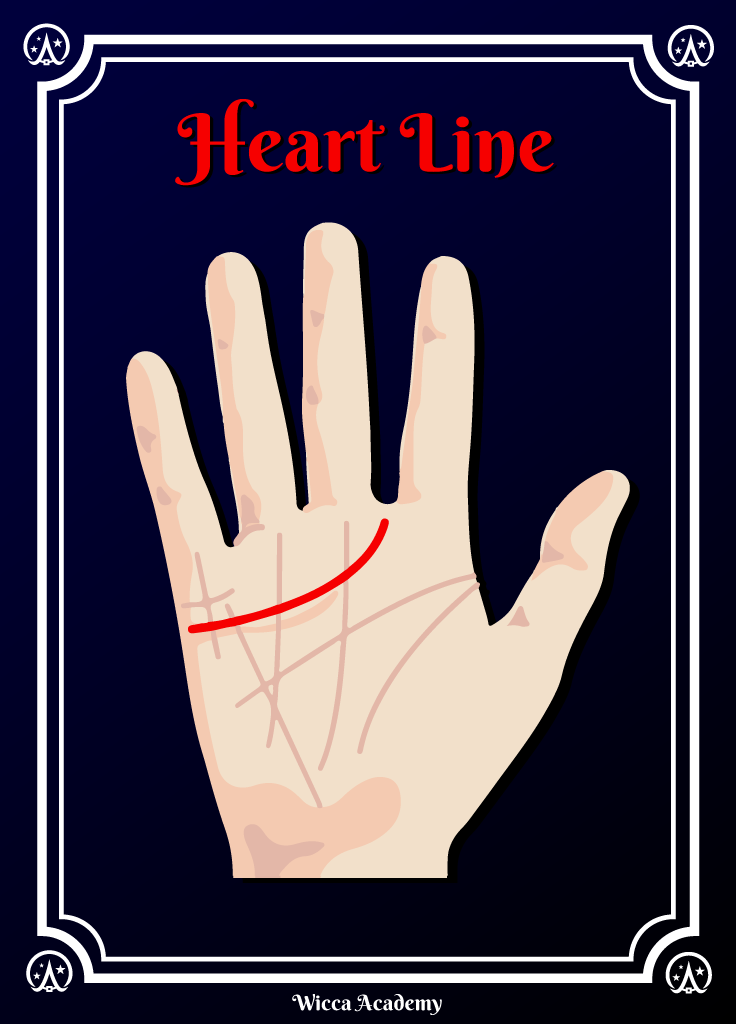
The heart line is the highest horizontal line slashing across the palm of your hand — the nearest one to your fingers. In palm reading, love lines represent all manner of romantic, sexual, and even platonic attachments. So how do we interpret these marks?
Well first, we want to see where the line begins. If it starts under the index finger, we’re destined for a life of fulfilling relationships. Conversely, if it begins under the middle finger, we may have a bumpy road ahead.
The length of the line might tell us the longevity of the relationships in our lives. If you have breaks or forks in your line, they may signify that you’re destined for multiple significant relationships. Notably, this line isn’t the same one we use to see future marriages. In palm reading, marriage lines are usually found sneaking in horizontally from the side of the palm, under the pinkie.
Head Line
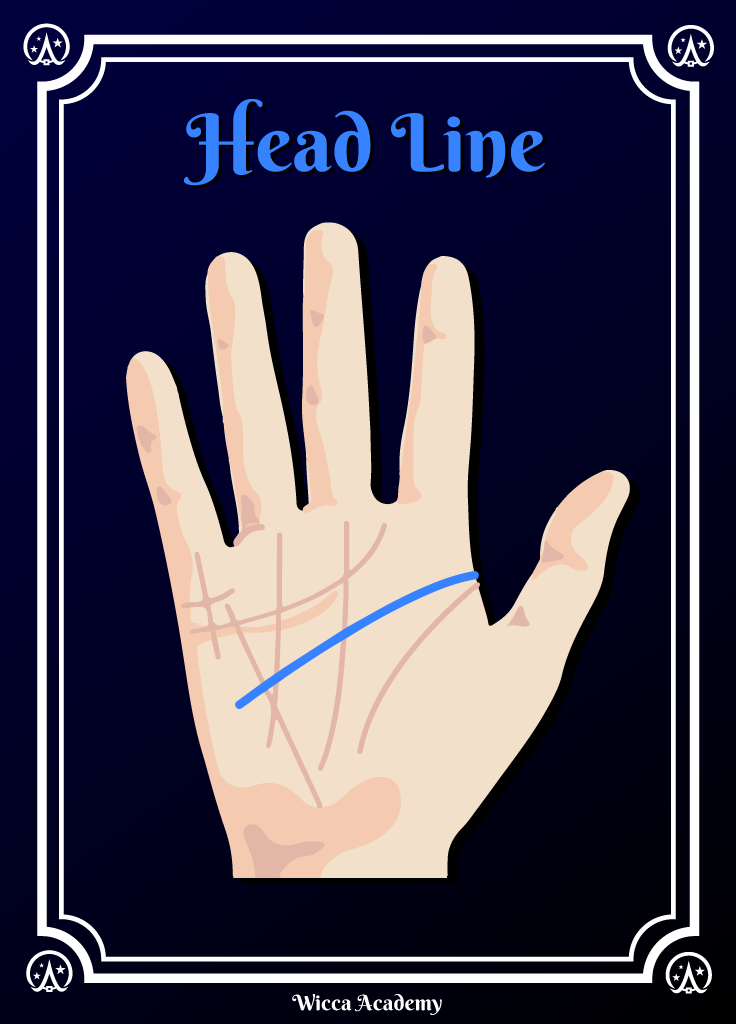
The next slash under the heart line is our head line. It should start between the thumb and the index finger and cut across the middle of the palm. Traditionally, this line has come to represent our path in life — but its meaning may be even more complex.
For example, it might tell us something about the lessons we need to learn. The longer the line, the more broad our education will be. Typically, a straight head line means that the person is a bit more strict and traditional, while a wavier line signifies progressive ideals.
Life Line

Next up, we have the life line. Those who are following along with a palmistry chart will see it curving around the ball of the thumb. People often make light of the craft, predicting early deaths to those with short life lines — but we certainly wouldn’t support that.
In any case, the length of the life line isn’t necessarily connected to the length of the subject’s life. Rather, the line is a predictor of the quality of one’s life experiences. More specifically, its depth reveals the richness of your life path, while its length signifies other people’s influence. So if nothing else, having a short line could just indicate a highly independent subject.
Fate Line
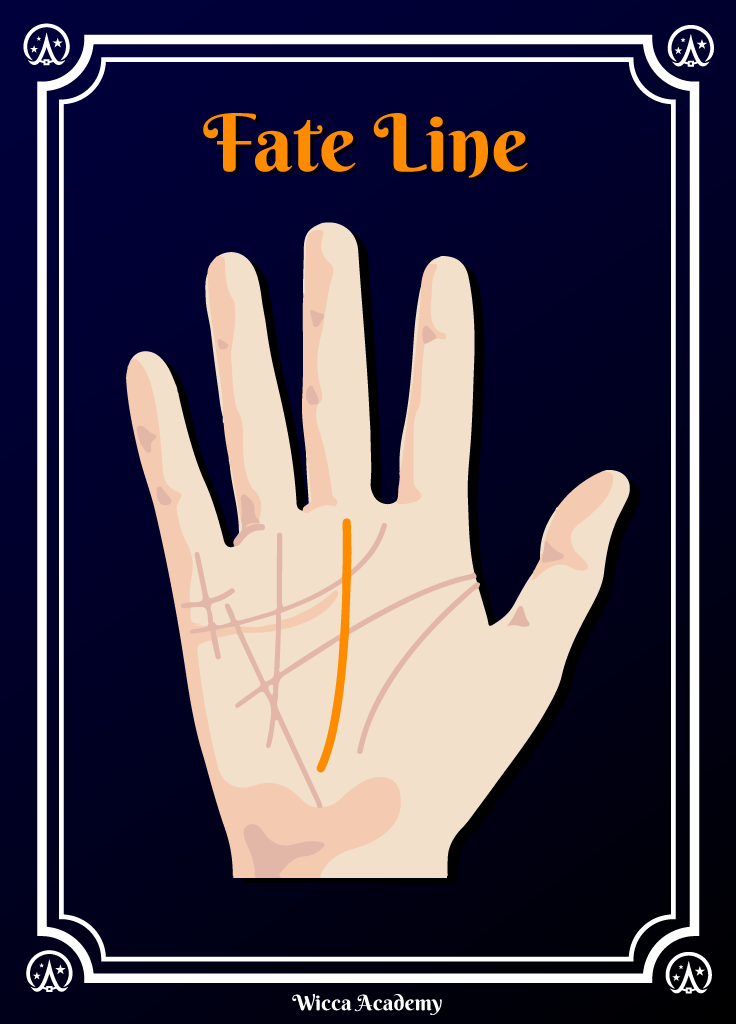
The fate line is the vertical mark that starts next to the life line and points toward the ring finger. It usually reveals the extent to which different circumstances will influence the subject’s life path. Sometimes, changes in the fate line can predict impending shifts in our lives.
Sun Line
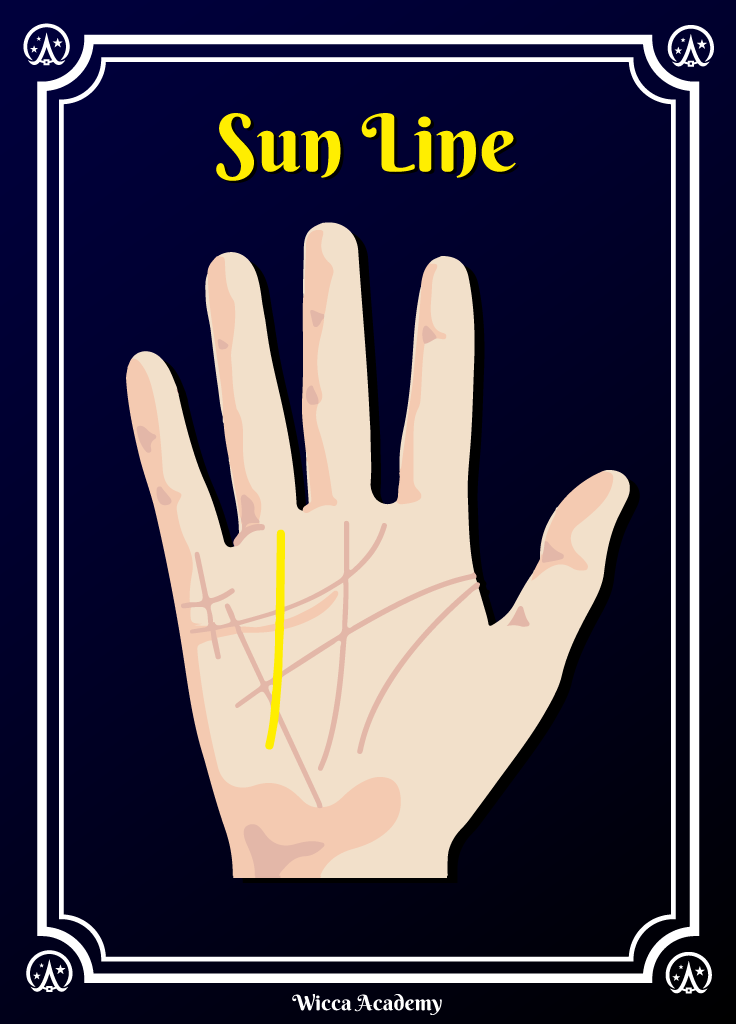
If you’re interested in seeing how you’ll be remembered, look at the vertical line next to your fate line. The sun line, otherwise known as Apollo’s line, can tell you something about the way other people see you. Because of that, some practitioners call this crease the success line.
Additionally, the position of this crease in relation to the fate line can tell you when or how you’ll become successful. If the two lines are close together or crossed, your fame will be the result of things you can’t control. If they’re apart, you’ll have to work on building your success independently.
Line Depth
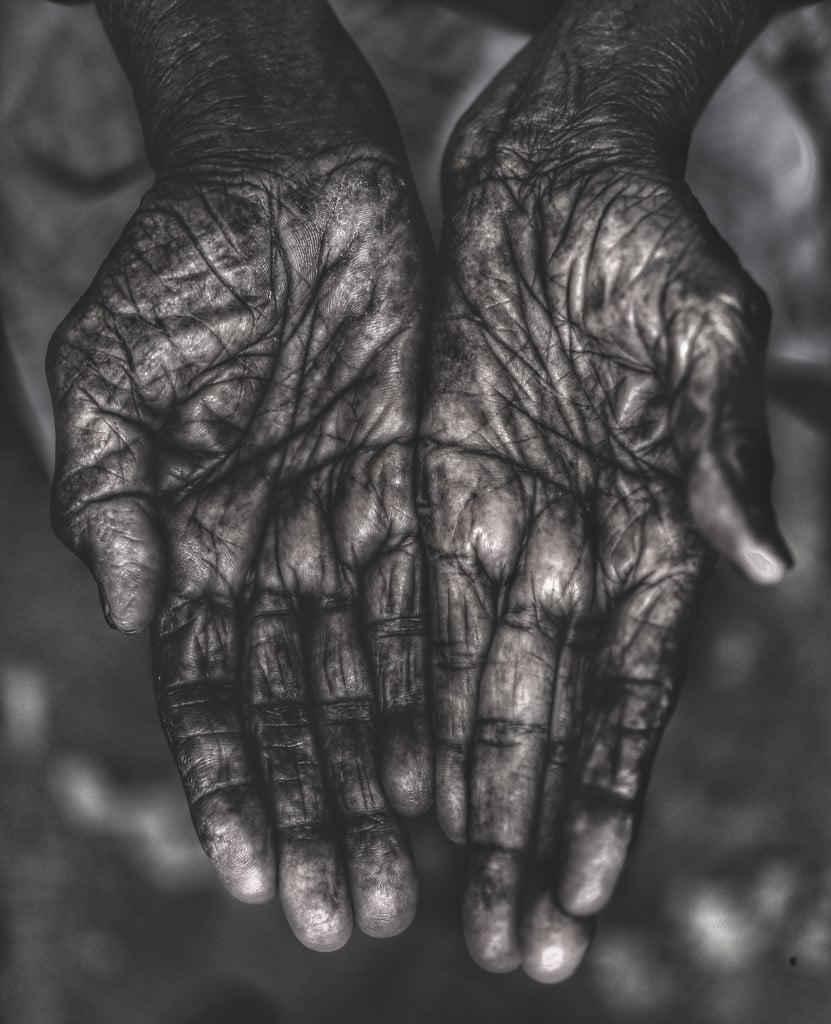
As we have indicated, reading palmistry lines isn’t just about interpreting the length and breaks in the creases. We also have to consider the quality and depth of the marks.
So what does this principle look like in action? Well, the depth of someone’s heart line might tell us the importance the person places on their relationships. On the other hand, a deep head line can reveal how difficult our mental pursuits will be.
And there are other generalizations we can make based on the depth of people’s palm creases. For example, someone with deep palm marks might have a more grounded approach to life than someone with light etchings. Conversely, someone whose palms are crisscrossed with many light lines may be more emotional. And of course, some people fall into both categories.
Hand Shape
When a casual enthusiast looks for a palm reading guide, they usually stop here. Luckily, Wiccans are more thorough. So here’s how you can broaden your scope of knowledge.
To truly understand someone based on their hands, you should also learn about the four different hand shapes. According to the art of palmistry, all hands belong to one of the following categories:
- Fire hands have long palms and short fingers. These people are usually passionate and confident, but they can also be impatient and impolite.
- Water hands are usually soft and narrow, with long palms and long fingers. They’re often indicators of an intuitive, compassionate, and imaginative nature. However, people who have water hands are also easily hurt.
- Air hands are a combination of square palms and long, spindly fingers. People with air hands are usually analytical and communicative, but easily distractible.
- Earth hands are fleshy and stocky, with square palms and short fingers. People with earth hands are practical and reliable. Still, sometimes they get too hung up in the now to think about the bigger picture.
These features can be just as important for interpreting the creases in our palms. However, they’re not the only ones we can look at.
Mounts and Plains
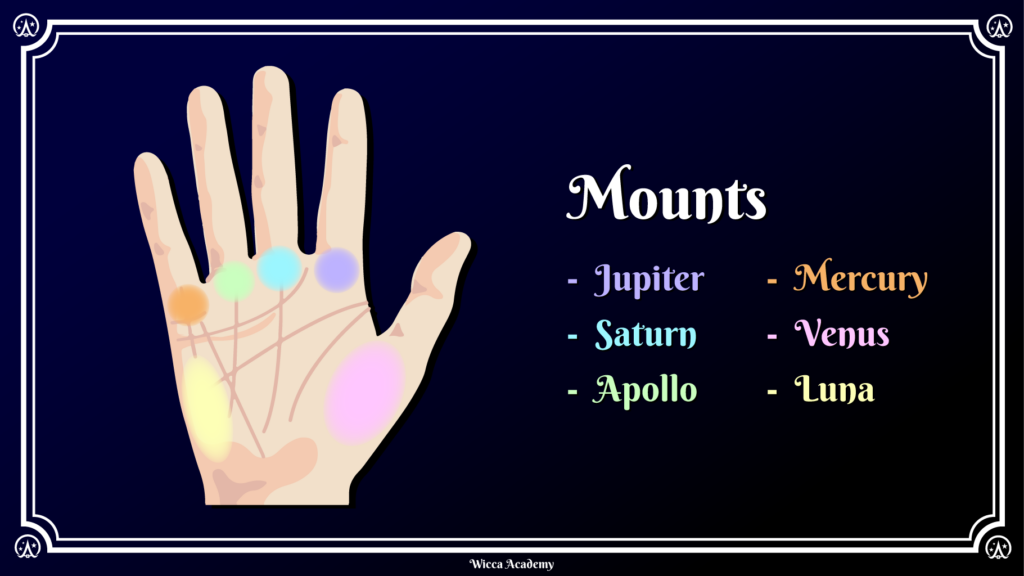
All those creases and lines we talked about also form the mounts and plains that make up the fleshy side of our palms. For example, the fleshy bump under the index finger is the Mount of Jupiter — or Zeus, whichever pantheon you subscribe to. Either way, that part represents confidence and ambition, as well as a connection to the spiritual.
If the mount is slightly elevated, it signifies that the subject has achieved balance in those areas. However, if it’s flat or over-inflated, it means that they could stand to work on them a bit — or tone them down. With that in mind, let’s see what the other mounts represent:
- The Mount of Saturn is under the middle finger. It represents wisdom and integrity.
- The Mount of Apollo is under the ring finger, and it signifies the subject’s optimism, vitality, and ultimate success.
- The Mount of Mercury is at the base of the pinkie. It represents one’s social skills and resourcefulness.
- The Mount of Venus is the area on the ball of the thumb, and it signifies romantic and sexual attraction.
- The Mount of Luna is on the outer edge of the palm. It shows how compassionate and intuitive the subject is — or if they’re lacking in those areas.

In between all these mounts, we also have dips, which are generally associated with Mars — or Ares. Between the Mounts of Venus and Jupiter, there’s Inner or Lower Mars, which represents physical strength. On the other side of the palm, we have the Outer or Upper Mars, which represents tenacity and emotional vulnerability. The Plain of Mars in the middle of the palm shows us the balance between these two.
The Witch’s Marks

If you practice palmistry on yourself or other Wiccans, you may find that you have certain features in common. Namely, spiritualists often have tell-tale signs of supernatural power such as:
- The Mystic Cross, an X-shaped symbol between the head and heart lines. Depending on its proximity to different mounts, it can represent a natural affinity to different mystical arts.
- The Psychic Triangle under the ring finger, which is an indicator of suppressed supernatural abilities. That usually means that the subject should cultivate their powers with caution, as they may have harmed people in their past lives.
- The Healer’s Mark, or vertical lines under the pinkie. The more lines there are, the greater the subject’s healing abilities are.
- The Traveller’s Mark, or vertical lines under the Mount of Luna, indicating an affinity for physical and astral traveling.
Don’t miss out!
We have a special offer for you after you create your free account
A Basic Palmistry Guide for Beginners

Now that we know the terminology of palmistry, let’s apply what we’ve learned. First, you need to ask for your subject’s hand — but which one? Well, different schools of thought believe in different meanings of the dominant and non-dominant hands.
On the one hand, the non-dominant hand might reveal a person’s innate personality while the dominant one shows what their traits look like in practice. Alternatively, it could be a matter of the conscious and subconscious mind. Either way, taking the dominant hand should be a safe bet.

When you look at the hand, take stock of the features we’ve discussed. Categorize the hand into one of the four elements to get the basic personality of the person. Build on your conclusions with the way the mounts and plains relate to each other — and to the hand shape. Finally, take note of the creases in the hand to get the bigger picture. If you want to make it easier to see certain features, you could also take the subject’s handprint. That would let you interpret the palm as a neat map of their deepest desires, ambitions, and potential futures. Besides — it will give your subject a souvenir of the experience!
Check out our other articles:
Sigils for Newcomers
Jar Spells Made Simple
Get to Know Your Familiar
Kitchen Magick for Beginners
Moon Phases and Simple Rituals
See All Articles
Love this article? Share the magick with your friends and loved ones!